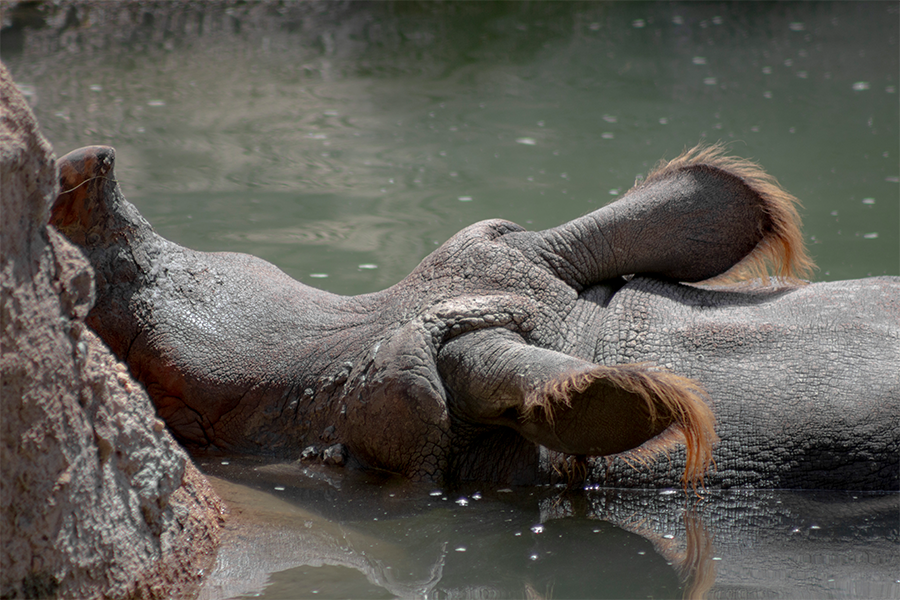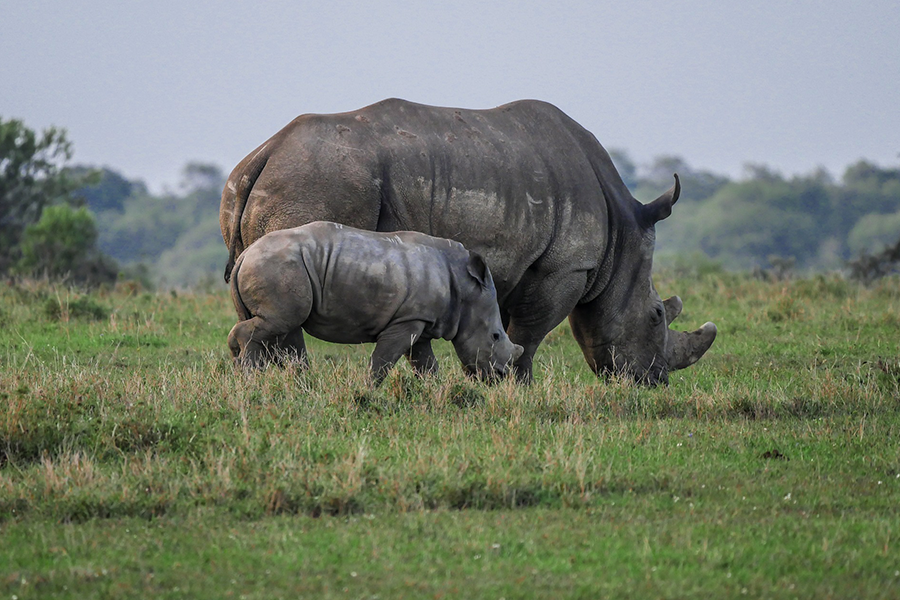If you stop and think about it, rhinos are pretty relatable. The more salad these herbivores eat, the more they end up weighing! Just kidding—we think their curves (and ours) are perfect. In all seriousness, their horns are made of keratin, the same protein our nails and hair are made of.
Rhinos belong to a group of animals call perissodactyls who all have hooves and an odd-number of toes on their rear feet. Scientists estimate half-million rhinos of nine species once roamed the earth.
Today, five species remain—white, black, Sumatran, Javan and Indian. These beasts can reach up to six feet tall and weigh over 6,000 pounds!

When P.J. decides to go swimming, he’s all-in!
We’re home to P.J., a seven-year-old greater one-horned Indian rhinoceros. Males of this species are territorial and remain solitary in their natural habitat, so we’ve provided P.J. his own area complete with his own pool. On especially hot days, you may see nothing but his ears sticking out of the water!
Unfortunately, these amazing land mammals face dwindling populations. Fewer than 29,000 individuals live outside of human-care. Four of the five species are threatened and three are deemed critically endangered. Habitat fragmentation leaves few essential resources and keeps rhinos from potential mates.

A memorial by Project Rhino for victims of poaching in South Africa. Photo courtesy of Shaz Lock.
An even bigger threat is the poaching crisis. According to the Department of Environmental Affairs, 588 rhinos have been killed since the beginning of this year in South Africa alone. Save the Rhino estimates an average of three rhinos fall victim to poaching daily. Small populations and low reproduction rates mean we are likely to witness the extinction of these horned herbivores.
Poaching is driven by the demand for rhino horn. Many cultures believe it can be used as a medicinal elixir, though there is no scientific evidence to prove this. Today, Vietnam prompts the highest demand due to a widespread rumor rhino horn was used to heal cancer. It is also viewed worldwide as a status symbol or “trophy.”
Trade of rhino horn is regulated by the Convention on International Trade in Endangered Species of Wild Fauna and Flora, a treaty signed by more than 180 countries to protect animals and plants from being wiped out. If you come across rhino horn or other material you believe may have come from the Black Market, report it to the U.S. Fish and Wildlife Service.

Groups of rhino in the wild are known as a “crash.”
You can join us by supporting the International Rhino Foundation, an organization we have proudly contributed to. They tirelessly work to maintain viable populations of all five species in their natural habitats so hopefully, in the future, all rhinos can be as comfortable and happy as P.J.